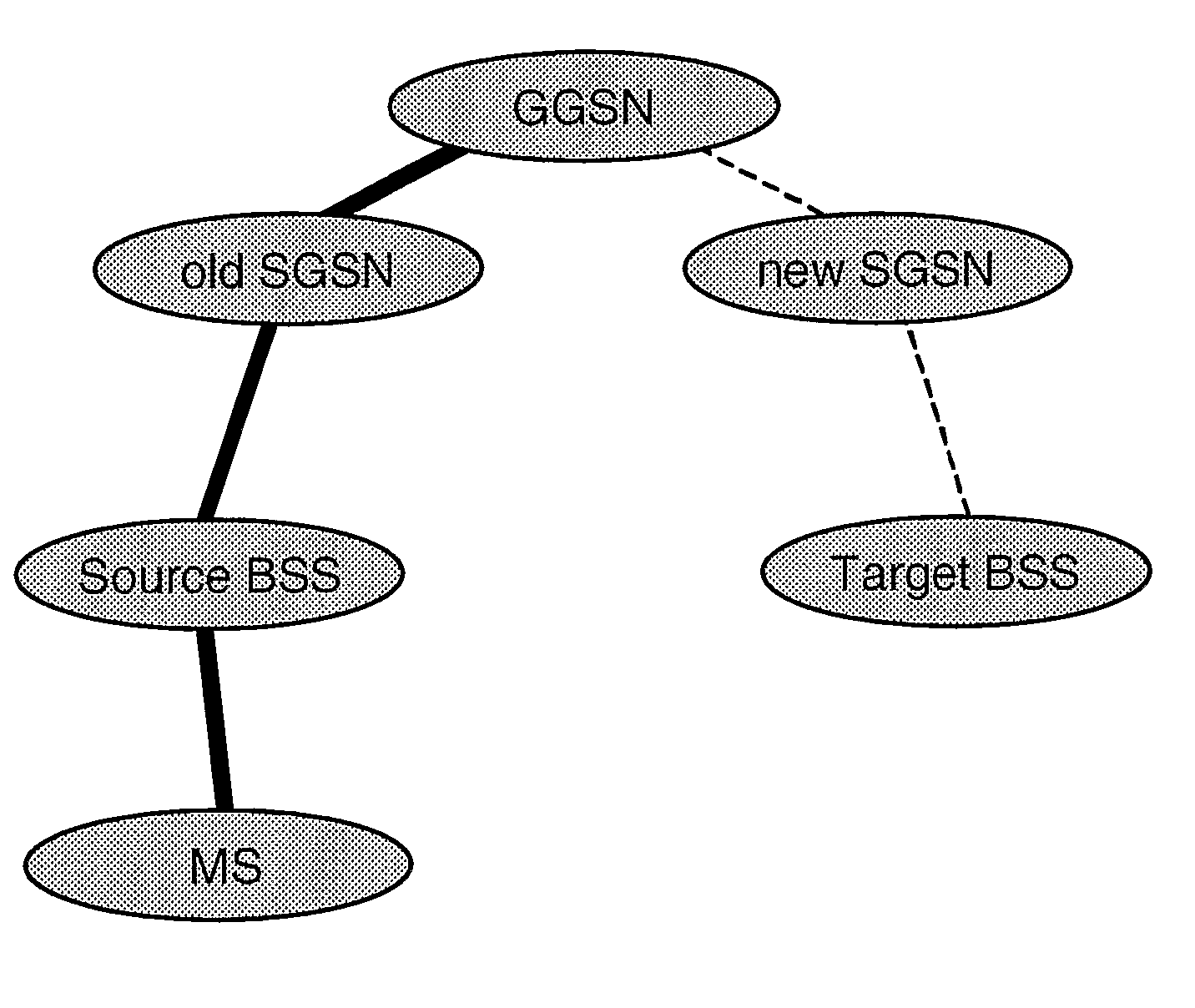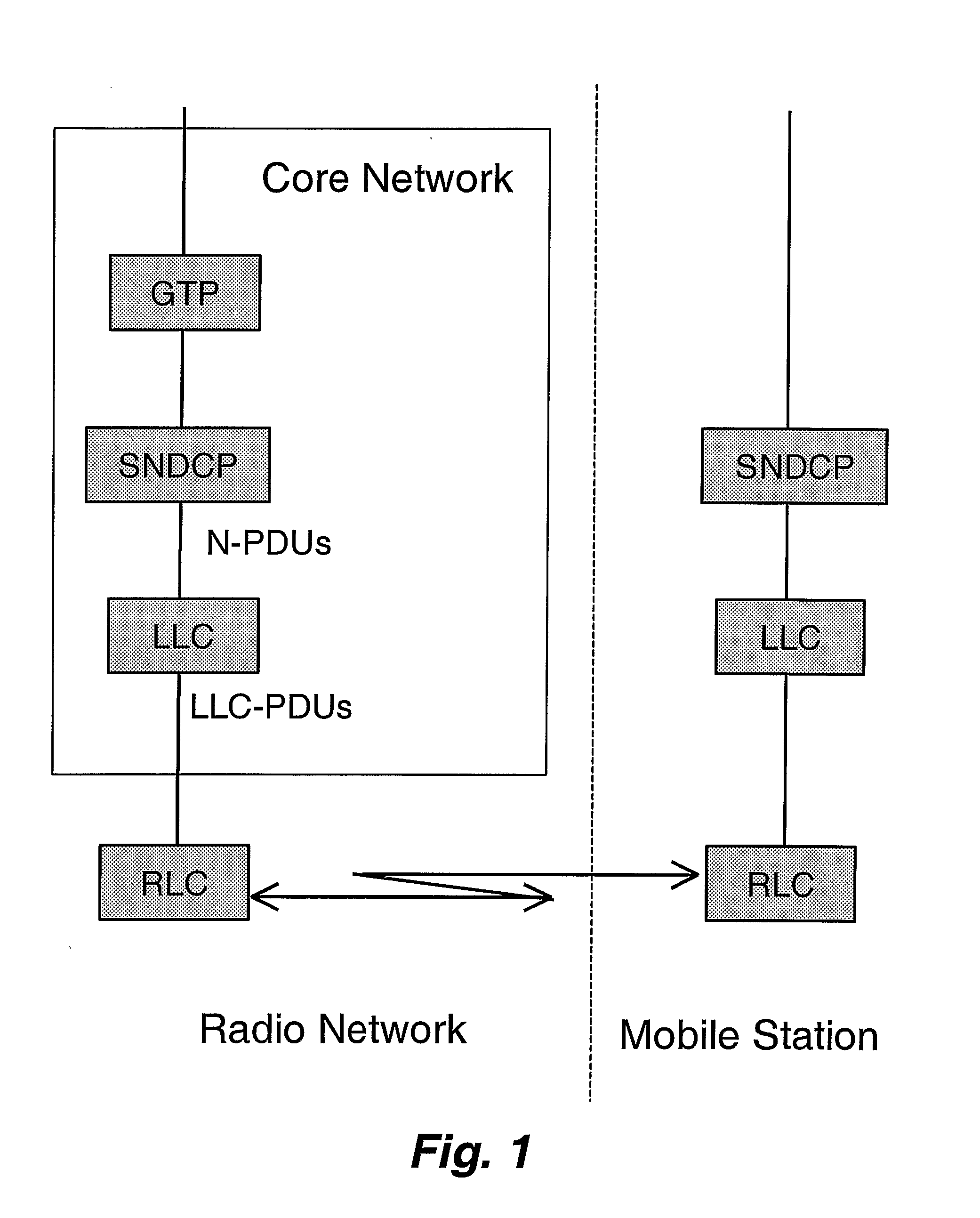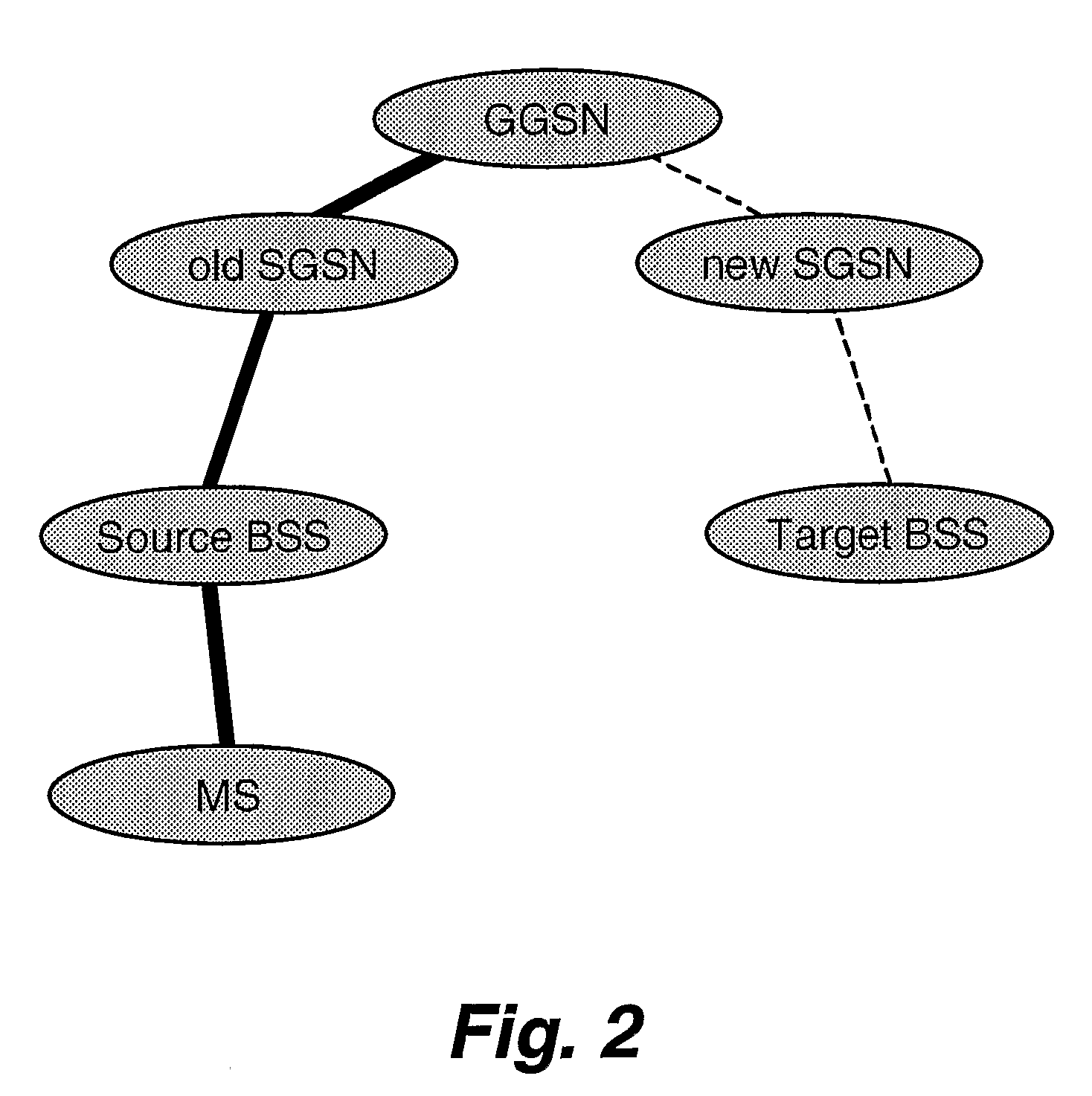Method and System for Base Station Change of Packet Switched Communications in a Mobile Communications System
a mobile communication system and packet switched technology, applied in the field of polymeric sheets or rolls, can solve the problems of increasing the cost of disposal of the liner, not being able to make pressure sensitive labeling a desirable option, and not being able to achieve the desired effect of pressure sensitive labeling, reducing the cost of disposal, and reducing the cost of psa labeling. , to achieve the effect of enhancing the bonding effect, reducing the cost of disposal, and reducing the cos
- Summary
- Abstract
- Description
- Claims
- Application Information
AI Technical Summary
Benefits of technology
Problems solved by technology
Method used
Image
Examples
example 1
[0103]Activatable Hydrophilic Formulation—30 parts 192 gram strength Animal Glue[0104]5 parts Urea[0105]5 parts Glycerine[0106]60 parts water
Film Type—PET
[0107]Approx. Coat Weight—4.5 grams / MSI
Activator Formulation—1 part Polycup 172[0108]1 part Glyoxal[0109]98 parts water
Substrate To Be Labeled—G
Wet Edge Difficulty Adhesion Rating Adhesive Action
Tack Pre / Post Ice Soak Pre / Post Ice Soak Pre / Post Ice Soak
3 3* / 2 3 / 2 A / A
[0110]*—film begins to destruct
Curl Blocking Ice Soak
[0111]3+ 2 3
example 2
[0112]Activatable Hydrophilic Formulation—30 parts 192 gram strength Animal Glue[0113]5 parts Urea[0114]5 parts Glycerine[0115]59.8 parts water[0116]0.2 parts Silane Crosslinker Gransil 51
Film Type—PET
[0117]Approx. Coat Weight—4.5 grams / MSI
Activator Formulation—1 part Polycup 172[0118]1 part Glyoxal[0119]98 parts water
Substrate To Be Labeled—G
Wet Edge Difficulty Adhesion Rating Adhesive Action
Tack Pre / Post Ice Soak Pre / Post Ice Soak Pre / Post Ice Soak
3 2 / 2+ 3 / 3 A / A
Curl Blocking Ice Soak
[0120]2 3 3
example 3
[0121]Activatable Hydrophilic Formulation—30 parts 192 gram strength Animal Glue[0122]5 parts Urea[0123]5 parts Glycerine[0124]59.8 parts water[0125]0.2 parts Silane Crosslinker Gransil 51
Film Type—OPP
[0126]Approx. Coat Weight—4.5 grams / MSI
Activator Formulation—1 part Polycup 172[0127]1 part Glyoxal[0128]98 parts water
Substrate To Be Labeled—G
Wet Edge Difficulty Adhesion Rating Adhesive Action
Tack Pre / Post Ice Soak Pre / Post Ice Soak Pre / Post Ice Soak
3 3 / 2 2+ / 1+ C / C
Curl Blocking Ice Soak
[0129]1+ 3 3
PUM
 Login to View More
Login to View More Abstract
Description
Claims
Application Information
 Login to View More
Login to View More - R&D
- Intellectual Property
- Life Sciences
- Materials
- Tech Scout
- Unparalleled Data Quality
- Higher Quality Content
- 60% Fewer Hallucinations
Browse by: Latest US Patents, China's latest patents, Technical Efficacy Thesaurus, Application Domain, Technology Topic, Popular Technical Reports.
© 2025 PatSnap. All rights reserved.Legal|Privacy policy|Modern Slavery Act Transparency Statement|Sitemap|About US| Contact US: help@patsnap.com



